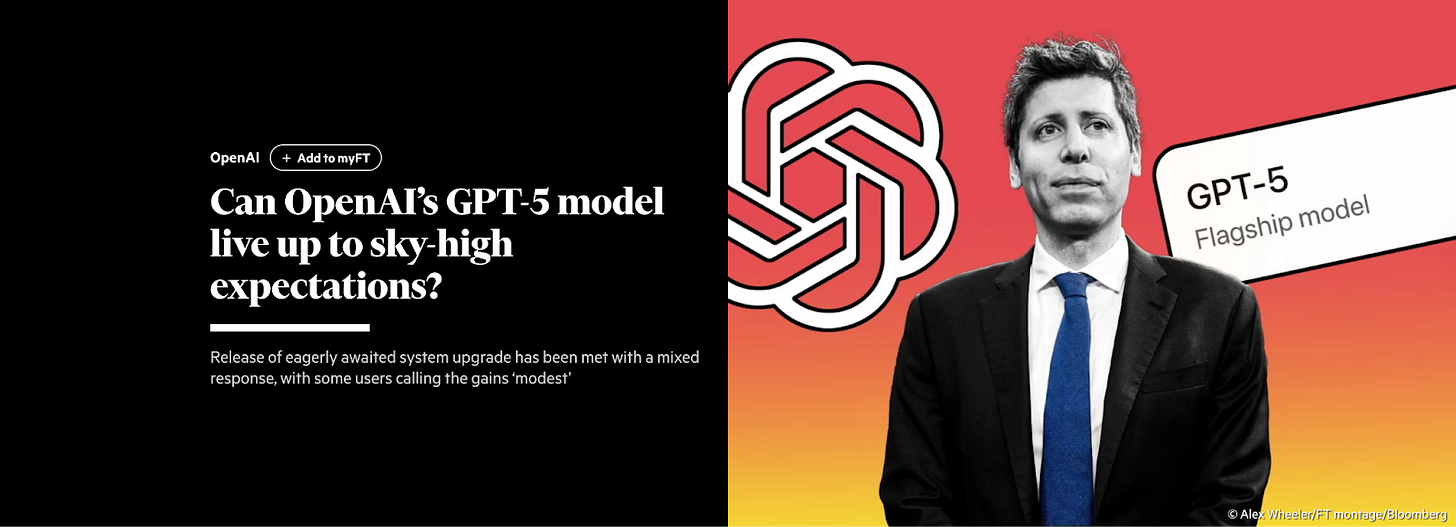🔮 The paradox of GPT-5
GPT-5 is brilliant. So why does it feel ‘modest’?
The Financial Times quoted me last week calling GPT-5 “evolutionary rather than revolutionary.” Then it twisted the knife: “Release of eagerly awaited system upgrade has been met with a mixed response, with some users calling the gains ‘modest.’”
“Modest” is one of those quietly loaded words. The Oxford English Dictionary defines it as ‘relatively moderate, limited or small’. ‘Relatively’ does a lot of work there. Compared with GPT-4 in March 2023, GPT-5 is a huge leap. Compared with bleeding-edge models released just months ago, it feels incremental. And compared with the sci-fi hopes, it’s restrained.

